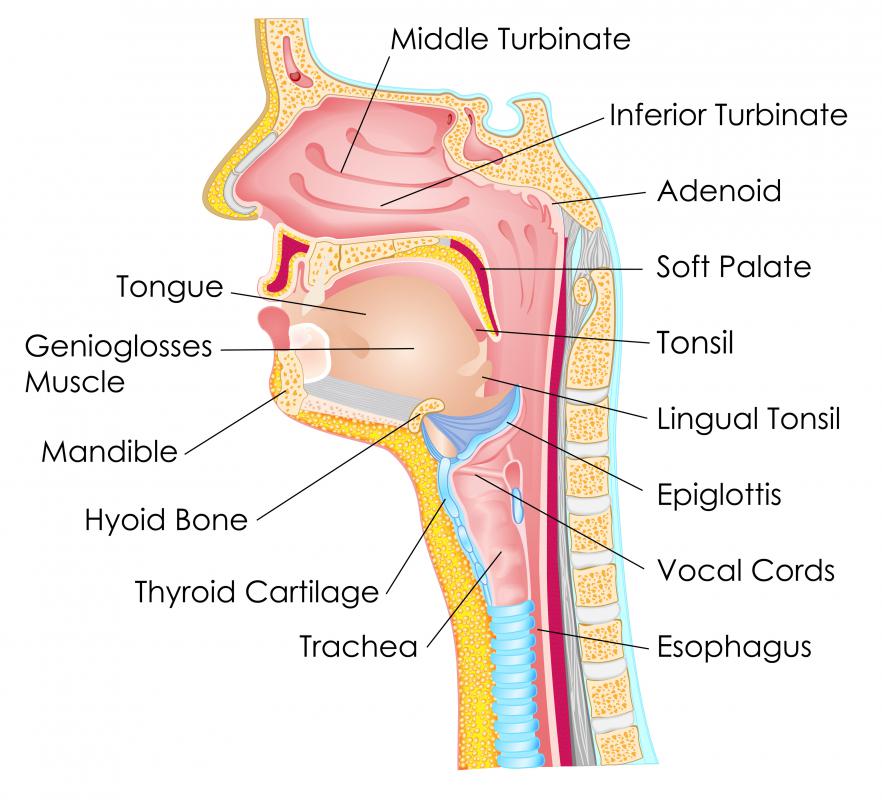At WiseGEEK, we're committed to delivering accurate, trustworthy information. Our expert-authored content is rigorously fact-checked and sourced from credible authorities. Discover how we uphold the highest standards in providing you with reliable knowledge.
What is the Levator Anguli Oris?
The levator anguli oris, also known as the triangularis labii superioris, is a muscle found in the mouth area of the face. This muscle is responsible for specific facial expressions, such as the ability to smile. As is the case with all facial muscles, the nerve supply for the levator anguli oris is from the facial nerve, also known as the seventh cranial nerve.
The canine fossa is where the levator anguli oris begins. The canine fossa is a hollow depression found on the superior maxillary bone, also called the jawbone. This fossa is located near the tooth socket of the canine tooth, thus getting its name.

The caninus, another name for the levator anguli oris muscle, is located just below the infraorbital foramen, an opening which leads to the bottom of the eye socket. A branch of the maxillary nerve passes through this canal, providing the nerve supply to this area of the body.
The fibers making up the levator anguli oris muscle insert into the angle of the mouth. These fibers also mingle with the muscles known as the triangularis, the orbicularis oris, and the zygomaticus. These muscles work together to allow the facial muscles to move in such a way as to allow movements which help to show visible emotion.

The triangularis muscle, also known as the depressor anguli oris, begins at the mandible, or jawbone. This is where the muscle fibers meet and join together with the levator anguli oris. The triangularis muscle is responsible for the facial expression of frowning.
The orbicularis oris muscle, which also connects with the levator anguli oris muscle, is a type of sphincter muscle that encircles the mouth. A sphincter muscle is a muscle that opens and closes in order to allow for proper functioning of specific body parts. The orbicularis oris works to allow the mouth to close. When contracted, this muscle also causes the mouth to pucker.

The zygomaticus actually refers to two separate muscles, each of which works with the levator anguli oris to create facial expression. The zygomaticus minor muscle moves the upper lip in various directions in order to create a series of sad facial expressions. The zygomaticus major muscle is responsible for raising the corners of the mouth, allowing a person to smile. Variations in the structure of this particular muscle sometimes creates dimples.
AS FEATURED ON:
AS FEATURED ON:














Discuss this Article
Post your comments